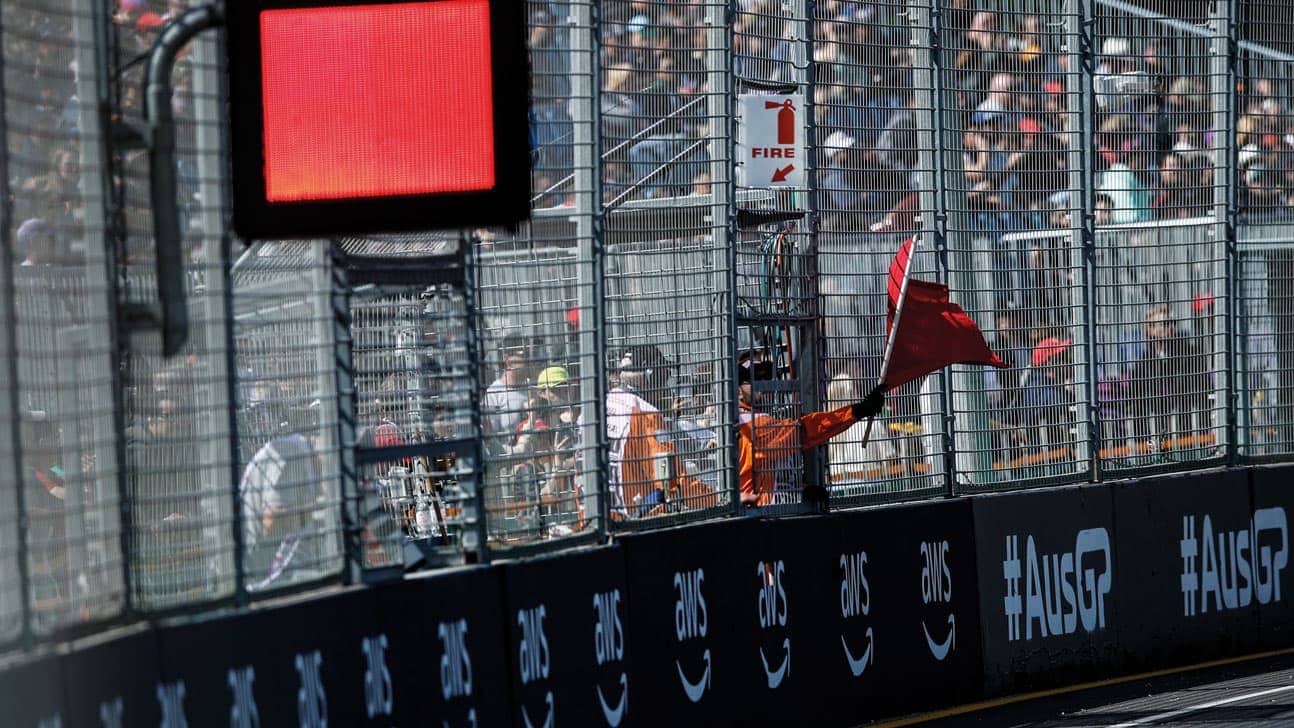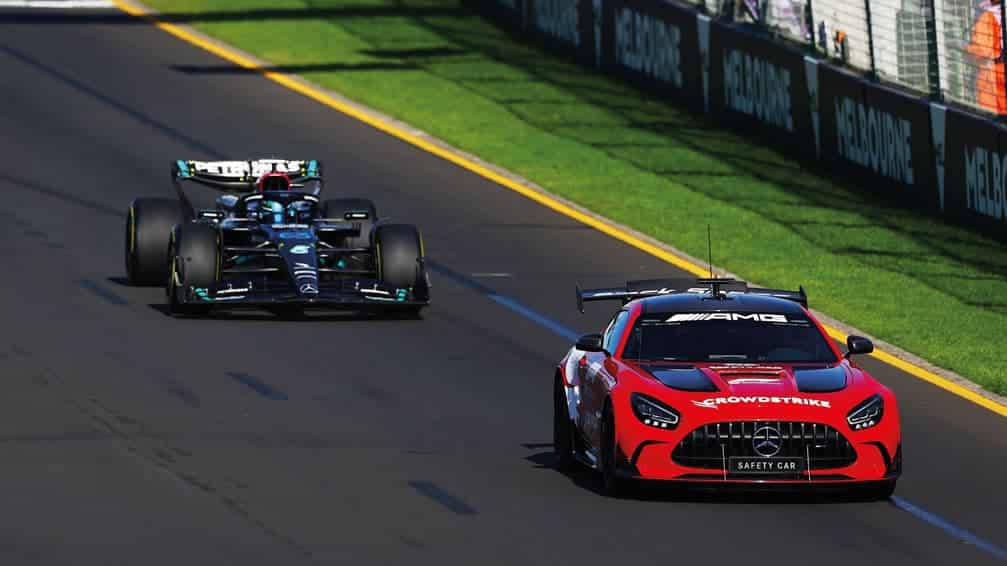Is F1 using red flags too much?
Max Verstappen wasn’t happy about the race stoppages, and neither were many others. So what’s the solution?

The Australian Grand Prix was halted several times for incidents that could otherwise have been dealt with by a safety car. Was it in search of drama?
DPPI
The question of whether the red flags for the accidents of Alex Albon (on lap seven) and Kevin Magnussen (on lap 54) were necessary was raised by several drivers. Max Verstappen was understandably highly aggrieved by the second one, as it wiped out his 10sec lead with just two scheduled laps left from another standing start. As it happened, his start was good and the victory secured. But both incidents could have been covered by a safety car (or even a VSC). It led to questions about whether red flags are being used excessively, possibly in a drive to create some drama in a season which looks likely to be dominated by one team.
“Restarts are a great entertainment factor,” said Mercedes’ Toto Wolff, “but we need to understand going forward when a red flag is being put out and when it is a safety car or a VSC. For those incidents we could have used either.
“F1 is so successful because it is sport and we follow the rule book and that gives great entertainment, as long as it is clear how it is being interpreted. Whether you call a VSC or a safety car or red flag, as long as we understand in terms of us being able to plan and in having the same rules for everyone, then that is OK.”
The second red flag essentially made for a two-lap sprint from a standing start but that too was red-flagged after Carlos Sainz triggered chaos by hitting Fernando Alonso at Turn 1. McLaren’s Lando Norris had sympathy for Sainz (who was penalised 5sec): “Although we were on the soft tyre for that last restart, it’s only at about 65 degrees and the tyre just doesn’t work at that temperature on this surface with this track temp. I can’t describe how the grip is. That’s why you see everyone going straight on at Turn 1 and locking up. At 65 deg it provides literally no grip, so you have to brake so early, which causes chaos. But if the tyres felt like they gave us some grip, you’d be able to see a good race without chaos and clumsiness and things like that. We need a tyre that gives us more grip and actually a tyre that feels like it should be on a Formula 1 car, at the top of motor sport and at the moment on a day like today, it feels pretty terrible.”
 Albert Park – Circuit
Albert Park – Circuit
Select a year
Type
Temporary road course
Length
3.28 (Miles)
Change
Turns 9 and 10 replaced by sweeping corners, Turns 2 and 13 reprofiled
Fastest Race Lap
Charles Leclerc (Ferrari SF-24), 1m19.813, 147.946 mph, F1, 2024
Fastest Qualifying Lap
Max Verstappen (Red Bull RB20-Honda RBPT), 1m15.915, 155.542 mph, F1, 2024
Type
Temporary road course
Length
3.295 (Miles)
Change
Direction reversed, new pit section, final corner bypassed and three further modifications
Fastest Race Lap
Michael Schumacher (Ferrari F2004), 1m24.125, 141.005 mph, F1, 2004
Fastest Qualifying Lap
Lewis Hamilton (Mercedes-Benz F1 W10 EQ Power+), 1m20.486, 147.380 mph, F1, 2019
Type
Temporary road course
Length
3.125 (Miles)
Change
Original anti-clockwise circuit
Fastest Race Lap
Stirling Moss (Cooper T43-Climax), 1m50.0, 102.272 mph, Formule Libre, 1958

